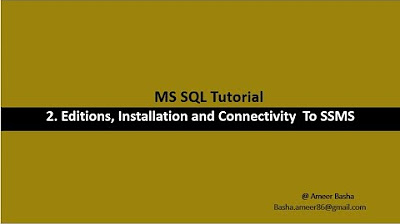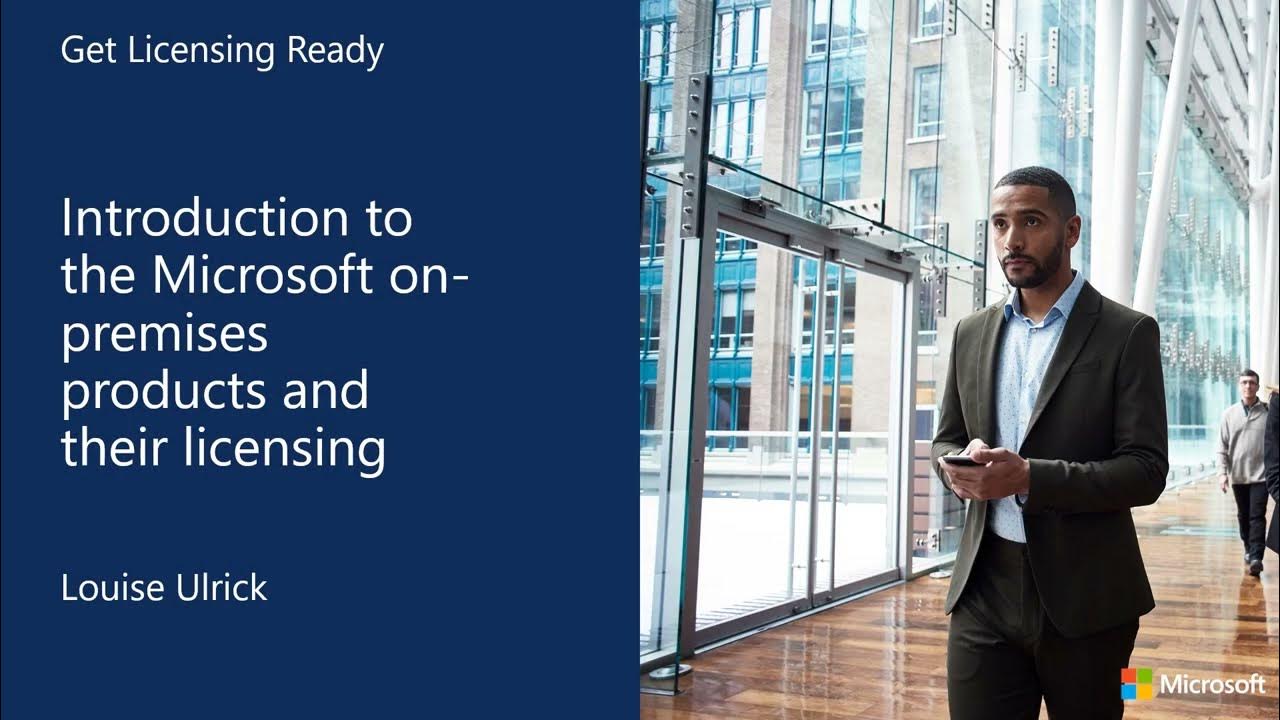How to License Windows Server I Master the Basics in 15 Minutes
Summary
TLDRThis video provides an in-depth guide to licensing Microsoft Windows Server, explaining the differences between Standard and Datacenter Editions. It covers how Windows Server is licensed per core and Client Access License (CAL) requirements for users and devices. The video also explores cost-effective licensing models for virtualized environments, detailing stacking, per-VM licensing, and the impact of software assurance. Viewers learn when to choose Standard or Datacenter based on virtual machine count, as well as how hybrid use benefits and disaster recovery rights can optimize costs in both on-prem and cloud environments.
Takeaways
- 😀 Windows Server is licensed per core and requires Client Access Licenses (CALs) for every user or device connecting to the server.
- 😀 Windows Server Standard edition allows for two virtual machines per physical machine, while the Datacenter edition offers unlimited virtualization rights.
- 😀 The minimum number of cores required for licensing is 16 cores per physical server, with 8 cores minimum per CPU or per virtual machine.
- 😀 When licensing for virtualized environments, avoid including hyper-threading in your core calculations to prevent over-licensing.
- 😀 The decision between Windows Server Standard and Datacenter depends on the number of virtual machines – Datacenter becomes more cost-effective for environments with more than 10-11 virtual machines.
- 😀 In virtualized environments, additional data is needed to calculate licensing, such as server names, cluster names, and whether load balancing is enabled.
- 😀 When stacking Windows Server Standard licenses, you can license additional virtual machines. For example, two licenses allow for four virtual machines, three licenses allow for six, and so on.
- 😀 Per virtual machine licensing is an option for environments with 8 to 14 virtual machines and may offer cost savings compared to traditional licensing models.
- 😀 Client Access Licenses (CALs) are less relevant today for organizations using M365 licenses (F1, F3, E3, E5) as they include hybrid user rights for Windows Server.
- 😀 Software Assurance benefits for Windows Server licenses include rights to the newest versions, step-up licenses, and hybrid benefits for licensing both on-premises and cloud environments.
Q & A
What is the licensing model for Microsoft Windows Server?
-Microsoft Windows Server is licensed per core with Client Access Licenses (CALs) for each user or device that connects to the server. For virtual machines, there's a minimum of 8 cores per virtual machine, and a physical server requires a minimum of 16 cores to be licensed.
How does Windows Server Standard edition differ from Data Center edition?
-Windows Server Standard edition allows for licensing two virtual machines on a physical machine, while the Data Center edition offers unlimited virtualization rights, allowing an unlimited number of virtual machines to be licensed. The Data Center edition, however, is more expensive than Standard.
When is it more cost-effective to choose Standard over Data Center edition?
-Choosing Standard edition is more cost-effective when running fewer than 10-11 virtual machines. If the number of virtual machines exceeds 10-11, the Data Center edition becomes more cost-effective due to its unlimited virtualization rights.
What additional information is needed to calculate licenses in a virtualized environment?
-In a virtualized environment, you need details such as the data center location, cluster name, server names, physical hardware specifications, number of virtual machines per cluster, the operating system version, and whether the environment is managed by System Center.
How is Hyper-Threading relevant in the licensing model?
-Hyper-Threading should not be counted when calculating Windows Server licenses. Only physical cores should be considered to avoid paying for additional licenses unnecessarily.
What role does Software Assurance play in licensing Windows Server?
-Software Assurance provides several benefits, including rights to the latest Windows Server versions, step-up licenses for upgrading from Standard to Data Center, backup rights for disaster recovery, and hybrid rights for using licenses in both on-premise and cloud environments.
What is the new per-virtual machine licensing model introduced in 2022?
-The per-virtual machine licensing model allows businesses to license individual virtual machines rather than licensing the physical hardware. This model is particularly beneficial for environments with 8 to 14 virtual machines, as it may offer cost savings over traditional core-based licensing.
How are Client Access Licenses (CALs) handled today?
-Client Access Licenses (CALs) are still required for each user or device accessing Windows Server. However, in many environments, especially those using M365 licenses (like E3 or E5), hybrid user rights are included, reducing the need for separate CALs.
How does licensing per virtual machine compare to the traditional stacking model?
-Licensing per virtual machine is often more cost-effective when dealing with a smaller number of virtual machines, as it reduces the number of core licenses required. In contrast, the stacking model for Standard edition becomes more cost-effective when there are 10 or more virtual machines.
What is the importance of understanding the number of virtual machines in a cluster?
-It's crucial to understand the exact number of virtual machines in a cluster to avoid over-licensing and to accurately determine the most cost-effective licensing model. Virtual machines running non-Windows operating systems or non-production environments may not require full licensing.
Outlines

This section is available to paid users only. Please upgrade to access this part.
Upgrade NowMindmap

This section is available to paid users only. Please upgrade to access this part.
Upgrade NowKeywords

This section is available to paid users only. Please upgrade to access this part.
Upgrade NowHighlights

This section is available to paid users only. Please upgrade to access this part.
Upgrade NowTranscripts

This section is available to paid users only. Please upgrade to access this part.
Upgrade NowBrowse More Related Video

Part 2 A : Editions, installation and Connectivity to SSMS

Introduction to the Microsoft on-premises products and their licensing

Capítulo 1 Introducción a Microsoft Windows Server

How to Download and Install Xilinx ISE Design Suite on Windows 10 & 11 (Step-by-Step Guide)

An Overview of Windows - CompTIA A+ 220-1102 - 1.1

Tekken 8 Standard vs Deluxe vs Ultimate vs Collector's (Which edition to buy)
5.0 / 5 (0 votes)